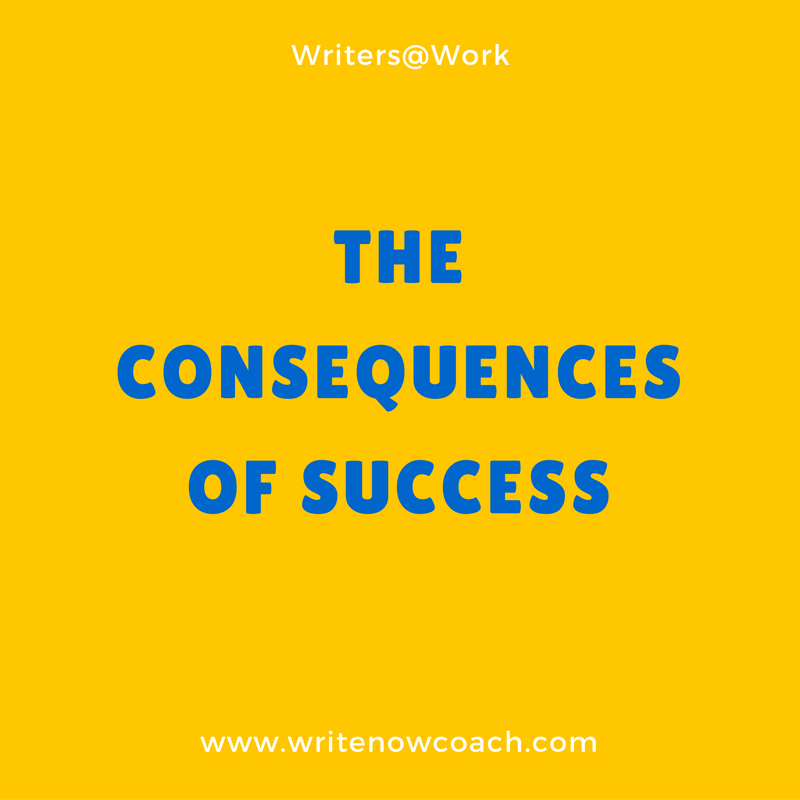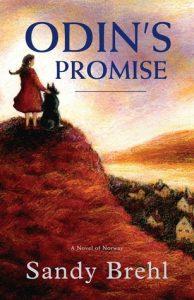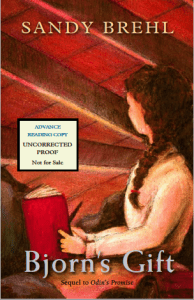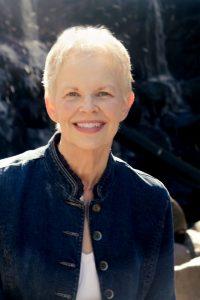Writers@Work: The Consequences of Success
October 11, 2016
Note From Rochelle
Dear Writers,
Greetings!
If you’re a Milwaukee-area writer, this week I’ll be speaking on Writing to Transform this Wednesday, October 12 at 6:00 PM at Villard Square Library. Come prepared to write and—hopefully—leave transformed!
Today I’m delighted to welcome Sandy Brehl to the blog. She’s got a fascinating take on success and sequels that will help you no matter where you are in the publishing process. And she’s offering a rare gift: a two-book giveaway. Read the post and then enter to win a set of her books, Odin’s Promise and Bjorn’s Gift.
Happy Writing!
Rochelle, the Write Now! Coach

Writers@Work: The Consequences of Success
by Sandy Brehl
Anyone who has the good fortune to be published can expect to hear the question: “How is your book doing?” It’s often a polite way of asking, “How are sales?” Or even, “Are you getting rich?
If that’s your goal, my advice is to buy a lottery ticket. Your odds will be better. That doesn’t mean you shouldn’t be prepared to answer the question on your own terms, though.
When I speak to would-be writers, even young kids, about “getting published,” I urge them to ask themselves that question and decide how they would like to be able to answer it, long before submitting work. A writer’s goals might vary for different submissions, but for my debut historical novel ODIN’S PROMISE, I had no doubt how I would measure success.
I had three criteria, each dependent on the others.
First, I wanted people to read it and finish it. If they were reading it and not setting it aside unfinished, that felt like success.
Second, I hoped readers would want to talk about it. When I finish reading some books, I can’t wait to find someone to discuss it. With others, even ones I enjoy, when it’s over, it’s over. I’ve been entertained or informed, but I move on. Pursuing conversations about a book is an indication that I connected with a book on a deeper, more enduring level. That’s what I hoped readers would do with my book.
Third, I was writing about a part of history that is obscure, and as a lifelong teacher I hoped readers would feel they had learned something new. Perhaps it would even change their view of the world. I was writing to tell a story, not to teach, but the historic research underlying that story mattered to me. I hoped something in it would surprise readers and perhaps even spark further reading on the topic of the German occupation of Norway during the Second World War.
I’m happy to answer that inevitable question: “How’s your book doing?” I can honestly say it’s doing great because it has met every one of my expectations. People are reading it, talking about it, and often say or write that they have learned many new things about Norway during the war years.
That’s cause for celebration, of course.
 But my high hopes were exceeded with several outstanding reviews by well-respected authors, bloggers, and media sources. ODIN’S PROMISE was even awarded the Midwest Gold Medal for Best Children’s Fiction, among other accolades. I mention those happy surprises because, while greatly appreciated, they had not been my goals. In fact, what touched my writer’s heart most deeply was the way in which readers welcomed the main character, Mari, into their lives.
But my high hopes were exceeded with several outstanding reviews by well-respected authors, bloggers, and media sources. ODIN’S PROMISE was even awarded the Midwest Gold Medal for Best Children’s Fiction, among other accolades. I mention those happy surprises because, while greatly appreciated, they had not been my goals. In fact, what touched my writer’s heart most deeply was the way in which readers welcomed the main character, Mari, into their lives.
I had struggled for decades, literally, to find the right voice and point of view for the story I was trying to tell. When years of continued research and revision finally revealed Mari’s young perspective, she took over the reins immediately and I fell in love with her. To hear from readers that they felt the same way, that they cared what might happen next to her, and to her family, felt better than winning the lottery.
There was just one problem.
Readers expected a sequel, and I didn’t have one. ODIN’S PROMISE was written as a stand-alone book. In fact, I had no idea how to write a sequel. I wasn’t about to let that stop me from trying, though.
Author appearances provided opportunities to meet and speak with an entirely new network of wartime survivors or their families, many of whom shared anecdotes and book recommendations about that era. Plunging into additional research was a fun challenge. I found an abundance of information that provided a timeline of dramatic events.
I’ve read countless series and trilogies, and I’m a resourceful learner with talented critique partners and a gifted editor. So, I began writing… and writing… and writing. In only a few months of work I realized that writing about four further years of German occupation, one that stars a twelve-year-old-growing-into-later-teens, had become a massive undertaking. My initial draft was far too long and Mari’s voice changed dramatically from the beginning to the end. My critique group and editor’s first passes at it were similar- less history, more story, please.
The irony is that my initial book was inspired by several true stories, but I struggled to find my reliable, appealing storyteller, Mari. For the sequel I had my reliable storyteller and plenty of history, but no central story to tell. It wasn’t until I spent more time “asking” Mari about the impact of the occupation on a developing teen that she began to answer my questions. I needed to allow her to grow in stages, as real adolescents do.
 That meant multiple revisions. It also meant writing a trilogy instead of a single sequel. Now Mari’s ready to continue her story in Book Two, BJORN’S GIFT, spanning 1941-1943. In it the German occupiers become even more threatening and intrude on her family’s home, forcing her to grow faster and farther than her previously sheltered life would have required.
That meant multiple revisions. It also meant writing a trilogy instead of a single sequel. Now Mari’s ready to continue her story in Book Two, BJORN’S GIFT, spanning 1941-1943. In it the German occupiers become even more threatening and intrude on her family’s home, forcing her to grow faster and farther than her previously sheltered life would have required.
“Middles” can be challenging when writing a single book, but for a trilogy the middle book required a tricky balance. I needed to create a full and satisfying story that could stand alone, yet connect to the original and lay the groundwork for the last book without giving too much away. I’ll wait to hear from readers how well I achieved that primary goal.
So what are my other criteria for success for this book? Simple. I hope readers will care just as much (or more) about Mari and her family after reading BJORN’S GIFT, and still be reading, talking about the book, and learning along the way. If you read it, I’d love to hear from you to let me know how I’m doing.
Thank you, Rochelle, for inviting me to share this process with your readers, and for all you offer to us as writers. And for your readers, take another look at your WIPs and start figuring out how you’ll want to answer that question when someone asks you: “How is YOUR book doing?”
 About the author. Sandy Brehl is a retired educator and active member of SCBWI (Society of Children’s Book Writers and Illustrators). She reads, writes, and gardens (weather and her knees permitting) in the Milwaukee area. Visit her website (www.SandyBrehl.com) to learn more about ODIN’S PROMISE and BJORN’S GIFT and to sign up for quarterly newsletters so you can learn about future releases (including MARI’S HOPE, 2017), upcoming events, and special offers.
About the author. Sandy Brehl is a retired educator and active member of SCBWI (Society of Children’s Book Writers and Illustrators). She reads, writes, and gardens (weather and her knees permitting) in the Milwaukee area. Visit her website (www.SandyBrehl.com) to learn more about ODIN’S PROMISE and BJORN’S GIFT and to sign up for quarterly newsletters so you can learn about future releases (including MARI’S HOPE, 2017), upcoming events, and special offers.









This is a comment for Sandy: Congratulations, Sandy. After reading Odin’s Promise, I can’t wait to dig into Bjorn’s Gift!
Thank you, Jerrianne. You’re a constant encourager, and I appreciate your support so much!
Awesome book really can’t wait for the next.